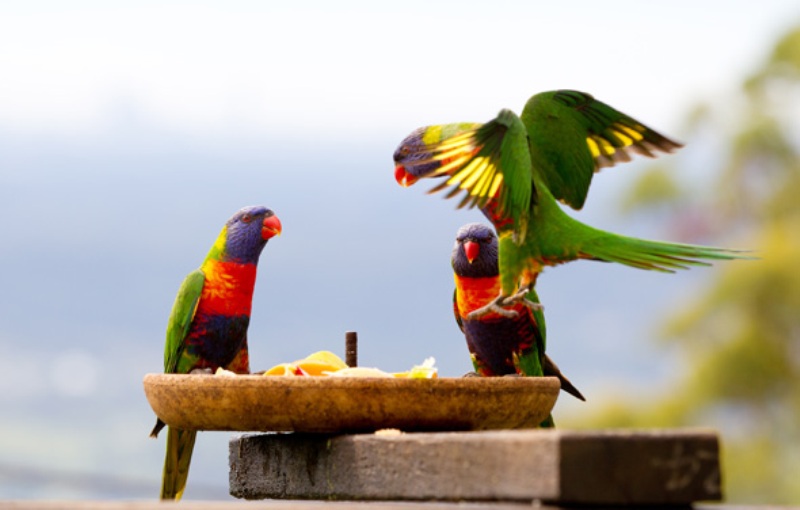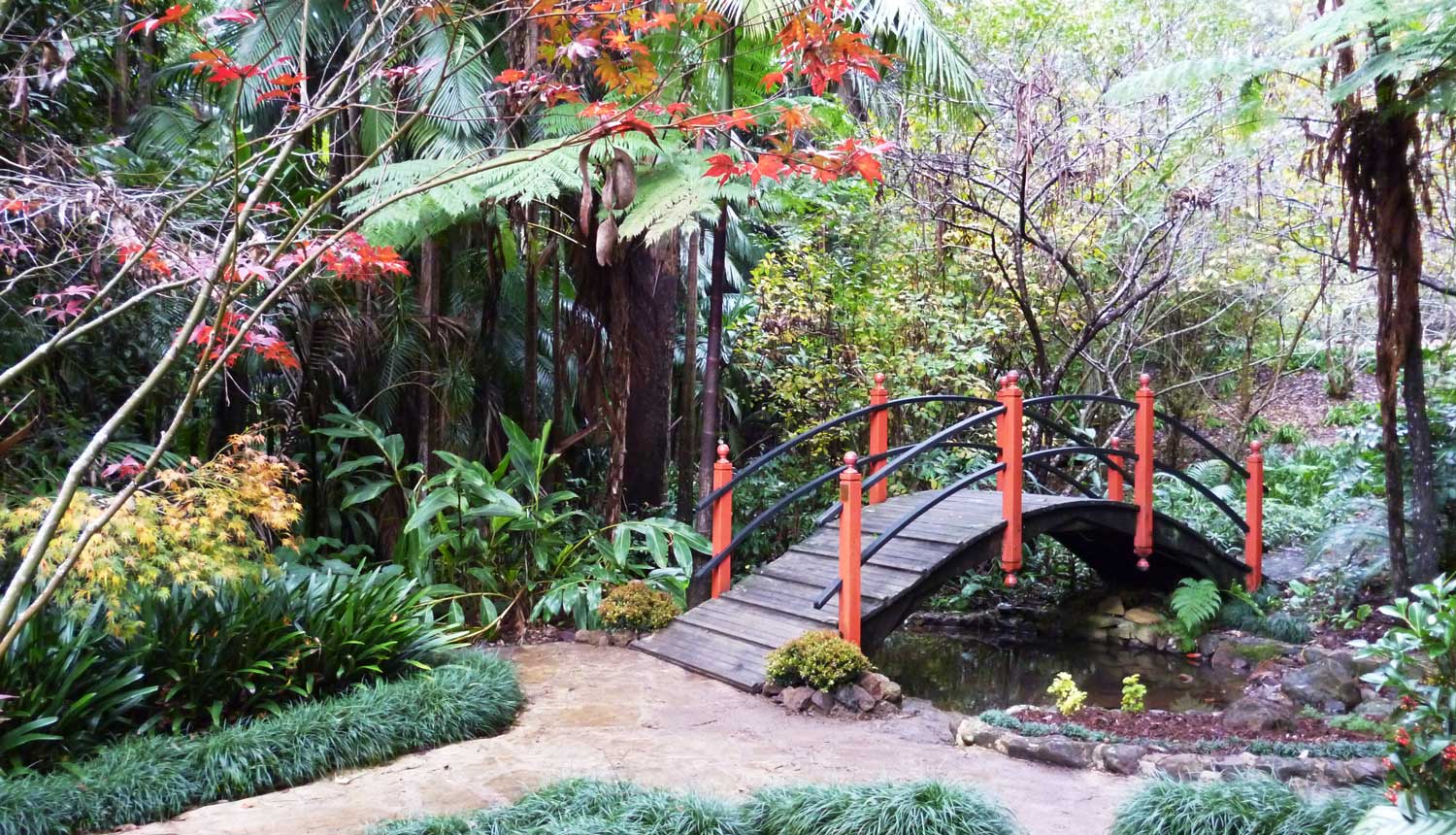Tamborine Mountain
Tamborine Mountain is a beautiful lush mountain plateau in the Gold Coast Hinterland, only an hours’ drive from Brisbane or Surfers Paradise. It is home to the first ever National Park in Queensland and a secret hideaway for Australia’s city dwellers.
Tamborine Mountain is part of the famous Gold Coast Hinterland, south of Brisbane, in South Eeast Queensland, Australia. The plateau is about 560m high and measures 8 km long and 4 km wide. The plateau originated from the Mount Warning volcanic eruption 22 million years ago and is part of the Scenic Rim Regional Shire. The plateau looks down on the surrounding lowlands, to the Gold Coast and Pacific Ocean to the east and all the way to the Great Dividing Range to the west. The Gold Coast view is breathtaking by day, but by night the panorama of lights is even more stunning.
Tamborine Mountain was the home of the Wangerriburra aborigines tens of thousands of years before white settlement. It was completely covered by subtropical rainforest, which was cleared at a rapid pace for agriculture and timber production after it was opened for selection in 1875. Fortunately in 1908 efforts were made to protect the natural beauty of the mountain and the very first National Park was created in Queensland – Witches Falls National Park. Over the years 12 separate sections with mainly remnant rainforest were added to the original National Park, almost encircling the plateau, and named ‘Tamborine National Park’. Most areas have well defined and easy to negotiate bush walking tracks right through the rainforest.
Tamborine Mountain has a healthy snake population and the local snake catchers are kept busy relocating mainly totally harmless snakes such as the carpet python back into the bush. One reason for the snakes’ success is the relatively low cane toad population. Because of the high altitude and correspondent cooler winters, cane toads are unable to build up large populations, so lethal toxic ingestion of cane toads is reduced on the mountain plateau.
Tamborine Mountain is also home to the giant earthworm, which grows up to 1 meter long and comes up to the surface after very heavy rain. The mountain is a sanctuary for the native flora and fauna. Birdwatchers especially appreciate the variety of some very rare bird species on the mountain. Lyrebirds, scrub turkeys, brilliant parrots and lorikeets, tawny frog mouth, whip birds and inquisitive bowerbirds populate the rainforests and can often be seen and always heard. Bird feeding is enjoyed by locals and tourists alike.
Elusive platypuses live in the clear mountain creeks and at night the glowworms glow in the rainforest. If you can find the time to walk through some of the National Parks you will hear many other bird songs and see an amazing range of Australia’s bird life. The Brush Turkey inhabits both rainforests and home gardens. The male builds huge mounds of leaf mulch, and then the female lays her eggs in the mound and walks away leaving him to manage the entire incubation process.
There are quite a few cute furred creatures like ringtail and brush-tail possums, bandicoots, koalas and wallabies as well. For some extra colour watch the myriad of butterflies throughout the Mountain and a wide variety of frogs, especially the green tree frog, welcome the summer rains with a cacophony of sound.

With its fertile red volcanic soil and high rainfall, the plateau produces rich crops of avocados, kiwi, macadamia nuts and rhubarb. Private gardens, as well as the TM Botanical Garden thrive and produce colorful displays any time of the year.
The original vegetation was predominantly sub-tropical rainforest. Valuable cabinet timbers such as the Australian Red Cedar lured the first settlers to Tamborine Mountain over 100 years ago. Since then much of this dense forest has been cleared to make way for farming, although many remnant stands of the original forest still exist. The most amazing of these are the belts of Piccabeen Palm forest around creeks and waterfalls.



































